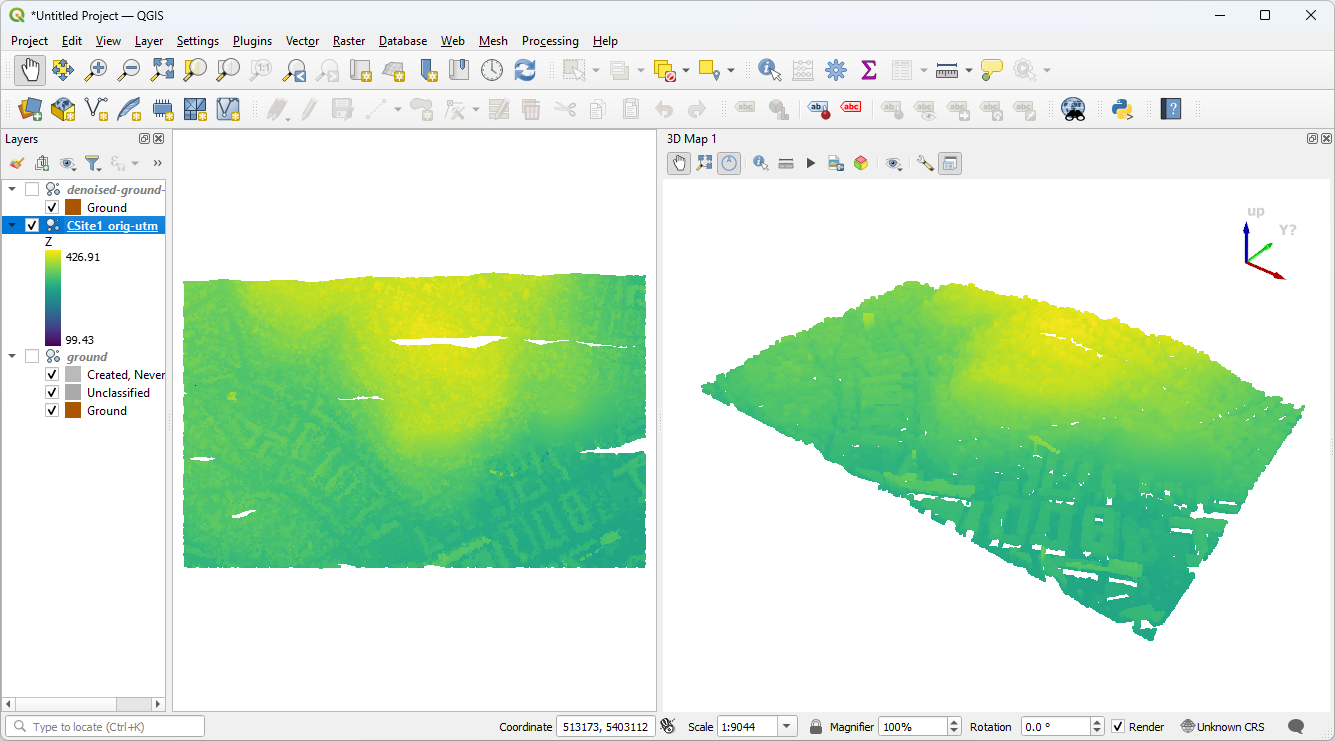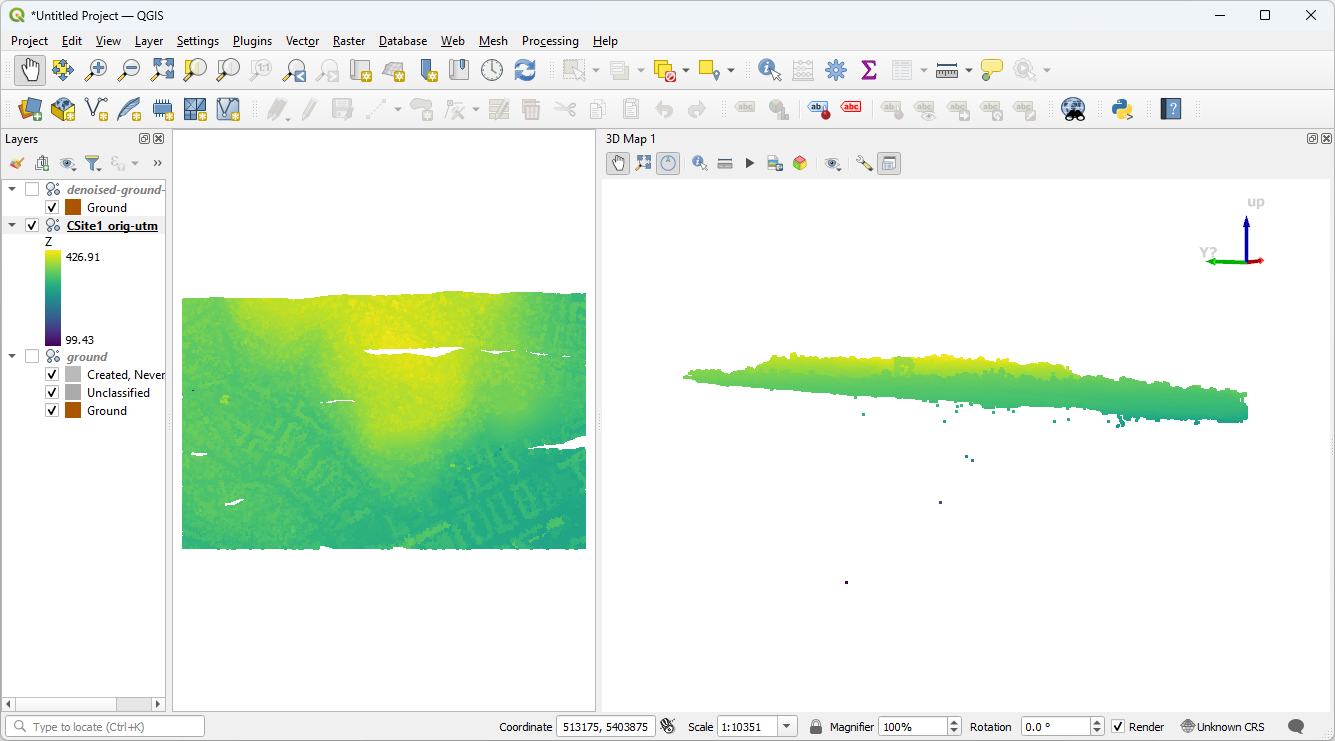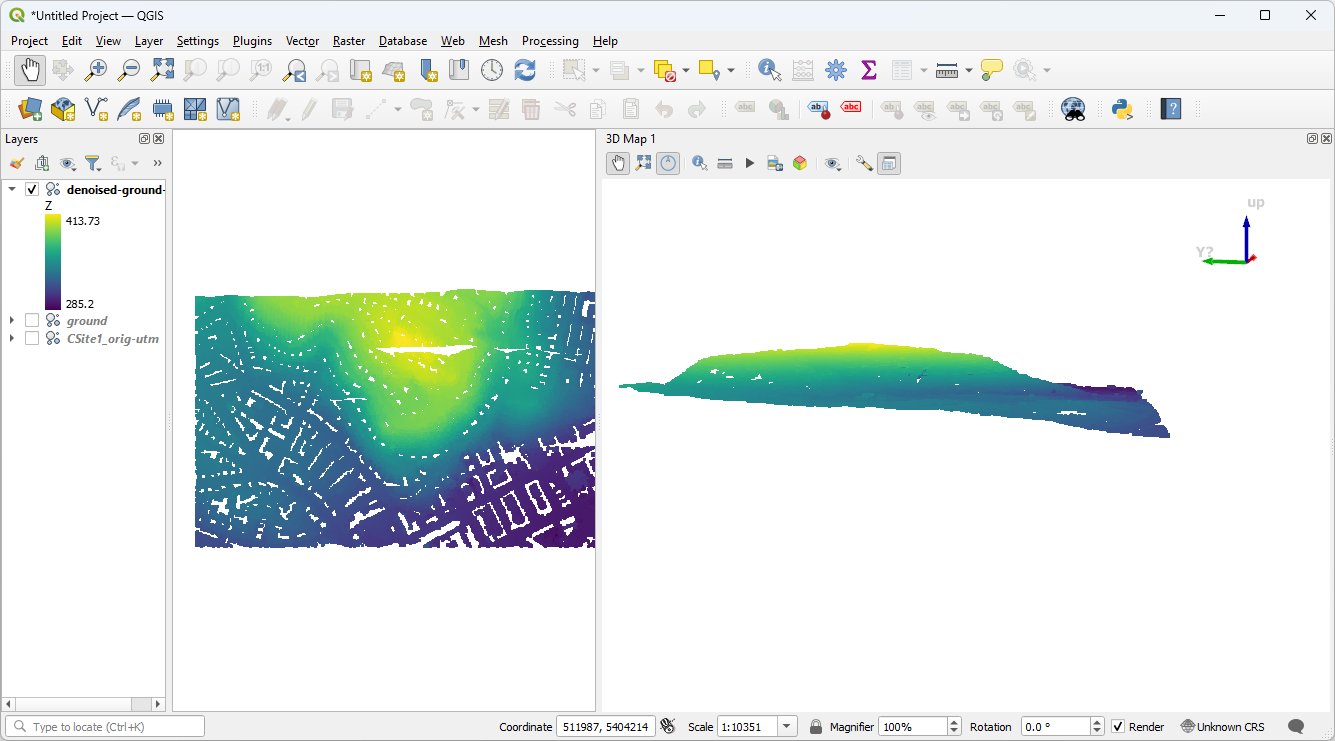Identifying ground
This exercise uses PDAL to classify ground returns using the Simple Morphological Filter (SMRF) technique.
Note
This exercise is an adaptation of the Ground Filter Tutorial tutorial on the PDAL website by Brad Chambers. You can find more detail and example invocations there.
Exercise
The primary input for Digital Terrain Model generation is a point cloud with ground vs. not-ground classifications. In this example, we will use an algorithm provided by PDAL, the Simple Morphological Filter technique to generate a ground surface.
See also
You can read more about the specifics of the Simple Morphological Filter (SMRF)
Command
Invoke the following command, substituting accordingly, in your Conda Shell:
$ pdal translate ./exercises/analysis/ground/CSite1_orig-utm.laz \
-o ./exercises/analysis/ground/ground.copc.laz \
smrf \
-v 4
> pdal translate ./exercises/analysis/ground/CSite1_orig-utm.laz ^
-o ./exercises/analysis/ground/ground.copc.laz ^
smrf ^
-v 4
As we can see, the algorithm does a great job of discriminating the points, but there’s a few issues.

There’s noise underneath the main surface that will cause us trouble when we generate a terrain surface.

Filtering
We do not yet have a satisfactory surface for generating a DTM. When we visualize the output of this ground operation, we notice there’s still some noise. We can stack the call to SMRF with a call to a the filters.outlier technique we learned about in Removing noise.
Let us start by removing the non-ground data to just view the ground data:
$ pdal translate \ ./exercises/analysis/ground/CSite1_orig-utm.laz \ -o ./exercises/analysis/ground/ground.copc.laz \ smrf expression \ --filters.expression.expression="Classification == 2" \ -v 4
> pdal translate ^ ./exercises/analysis/ground/CSite1_orig-utm.laz ^ -o ./exercises/analysis/ground/ground.copc.laz ^ smrf expression ^ --filters.expression.expression="Classification == 2" ^ -v 4
2. Now we will instead use the translate command to stack the filters.outlier and filters.smrf stages:
$ pdal translate ./exercises/analysis/ground/CSite1_orig-utm.laz \ -o ./exercises/analysis/ground/denoised-ground-only.copc.laz \ outlier smrf expression \ --filters.outlier.method="statistical" \ --filters.outlier.mean_k=8 --filters.outlier.multiplier=3.0 \ --filters.smrf.ignore="Classification[7:7]" \ --filters.expression.expression="Classification == 2"> pdal translate ./exercises/analysis/ground/CSite1_orig-utm.laz ^ -o ./exercises/analysis/ground/denoised-ground-only.copc.laz ^ outlier smrf expression ^ --filters.outlier.method="statistical" ^ --filters.outlier.mean_k=8 --filters.outlier.multiplier=3.0 ^ --filters.smrf.ignore="Classification[7:7]" ^ --filters.expression.expression="Classification == 2"
In this invocation, we have more control over the process. First the outlier
filter merely classifies outliers with a Classification value of 7. These
outliers are then ignored during SMRF processing with the ignore option.
Finally, we add a range filter to extract only the ground returns (i.e.,
Classification value of 2).
The result is a more accurate representation of the ground returns.
